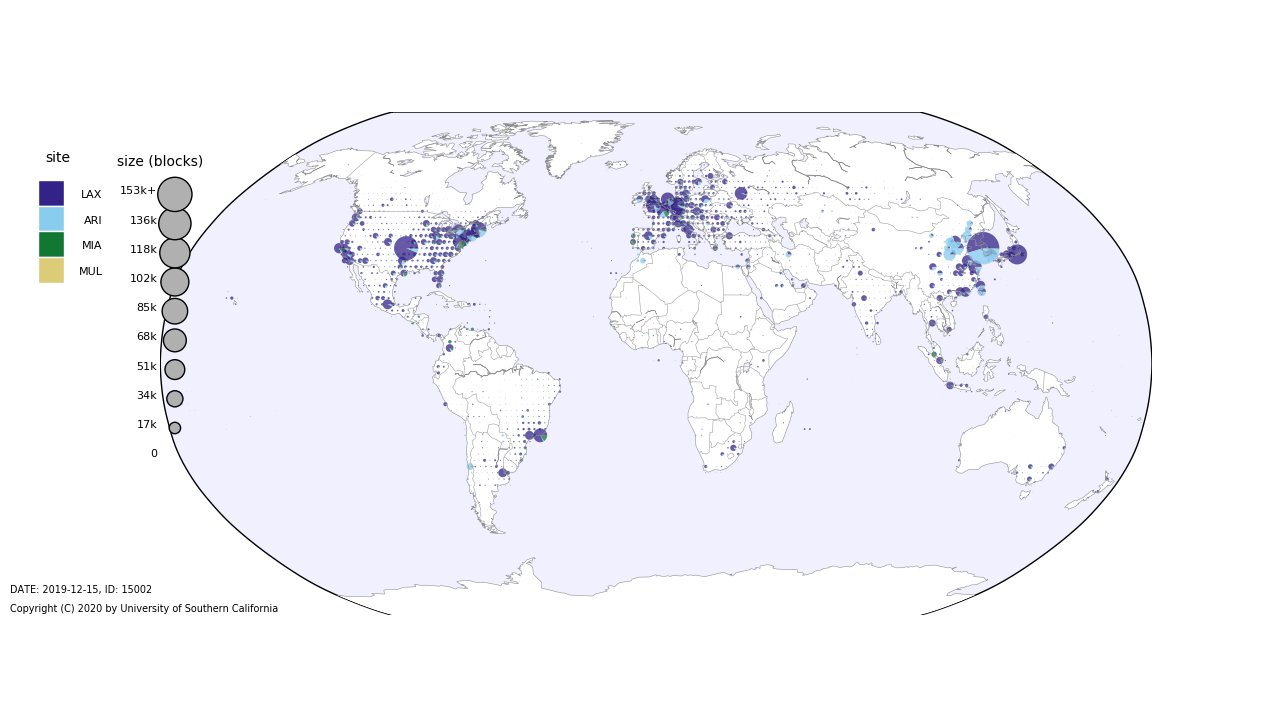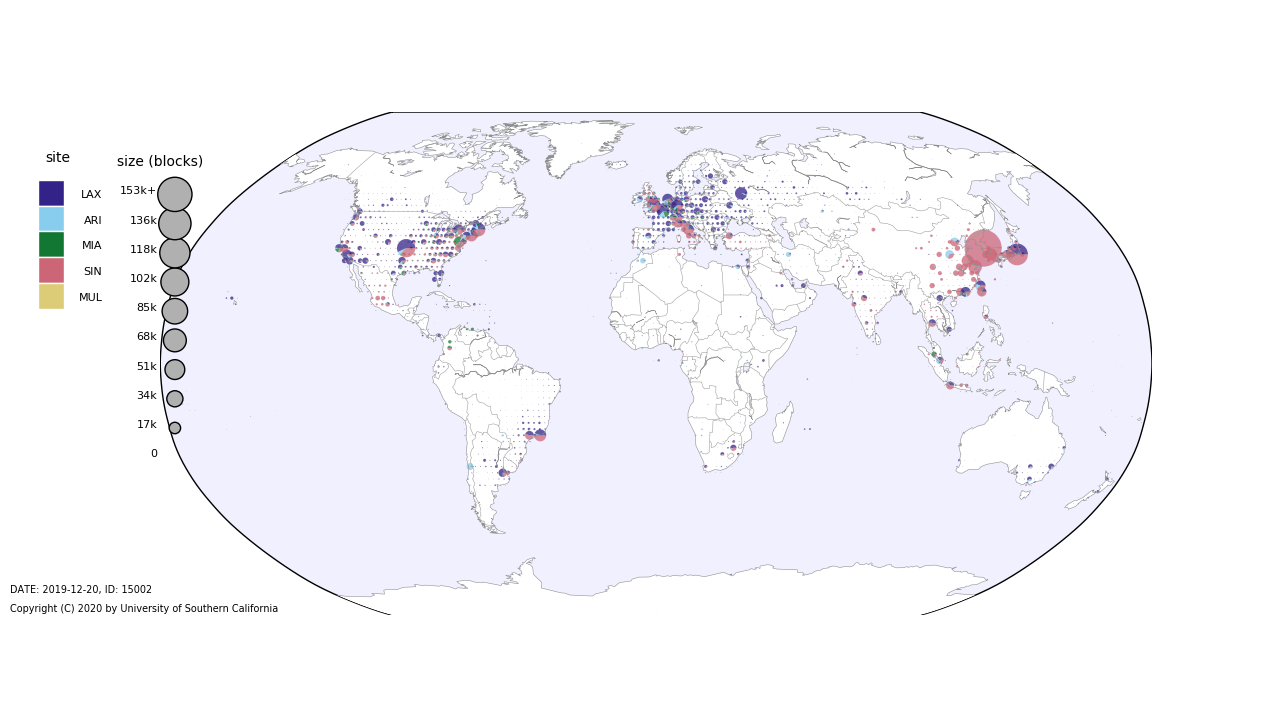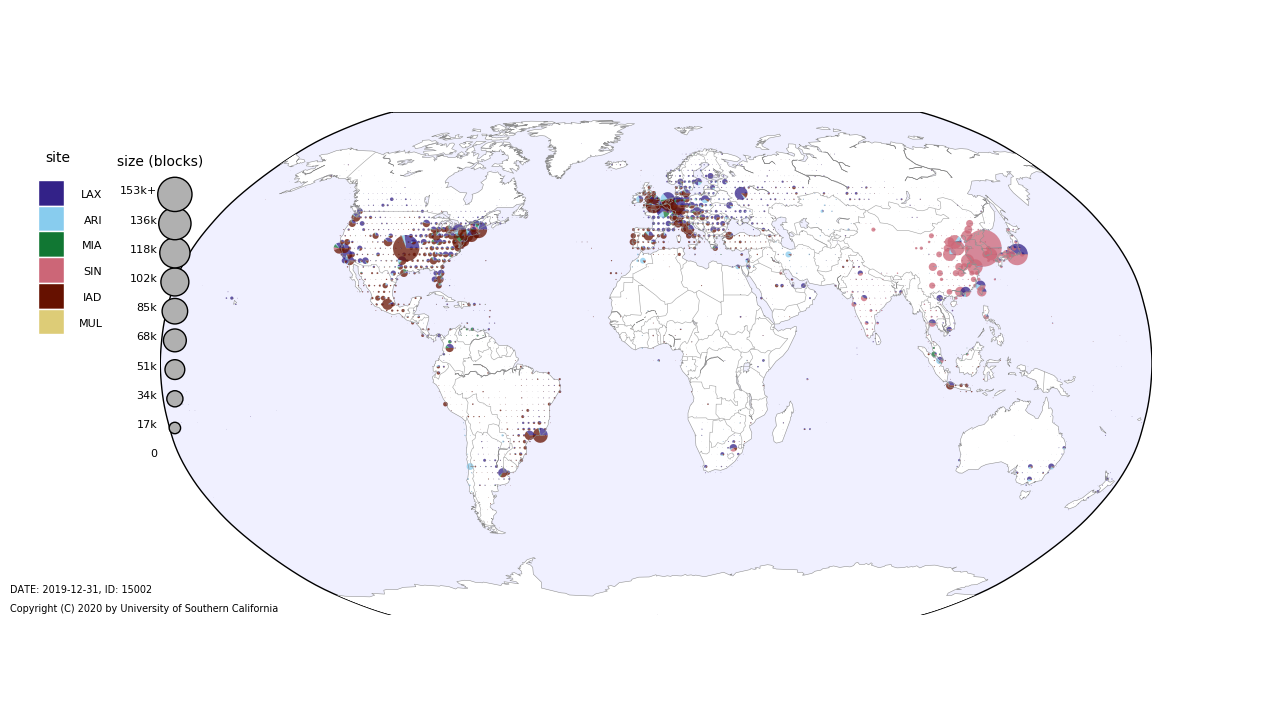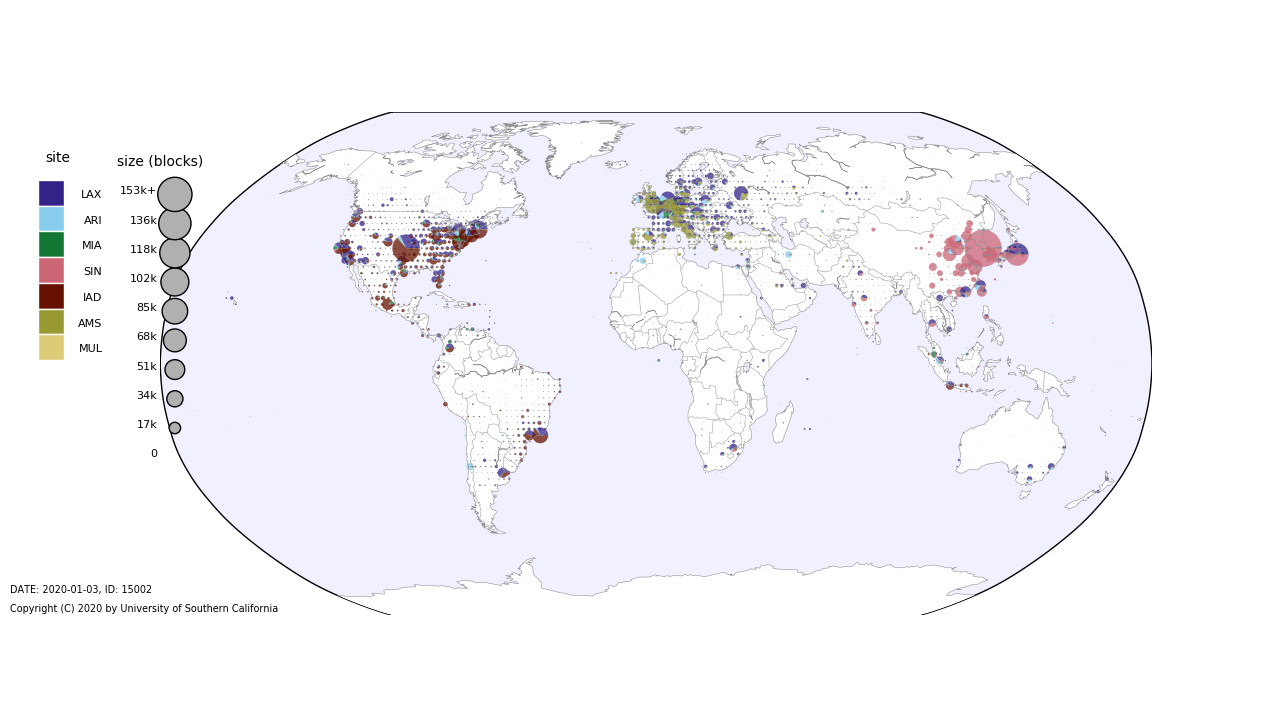B-Root's New Sites Reduce Latency
B-Root, one of the 13 root DNS servers, deployed three new sites in January 2020, doubling its footprint and adding its first sites in Asia and Europe. How did this growth lower latency to users? We looked at B-Root deployment to answer this question.
What is IP Anycast?
B-Root uses IP anycast, where it announces the same service IPv4 and IPv6 addresses from different sites around the world. Internet routing (with BGP) then sends users to one of these sites–often a close one.
(In addition to IP Anycast, the root DNS is served at 13 different pairs of IPv4 and IPv6 addresses (the 13 “root letters”). Here, we are just looking at B-Root, run by USC.
What Are Anycast Catchments?
A catchment is the set of users (or IP prefixes) that are routed to a particular anycast site.
Catchment mapping is the process to discover which clients go to which sites.
How do we find anycast catchments?
We use Verfploeter to probe over 6 million IPv4 /24 prefixes (or blocks) around the world. Each reply from these blocks shows which site it selects and shows that it is part of that site’s catchment.
We visualize anycast catchments on a world map with verfploeter_plotter tool. This tool maps all IP addresses to a latitutde/longitude grid and counting how many prefixes in each grid cell go to each site. We show a pie chart in each grid cell, with pie slices showing the fraction of traffic to each site, and pie size showing how many prefixes are in that cell.
B-Root’s New Sites
B-root added three new sites in January 2020. We measured them with a test prefix since late 2019:
- Singapore (SIN): 2019-12-20
- Dulles (IAD): 2019-12-31
- Amsterdam (AMS): 2020-01-03
These sites were added to B’s existing 3 sites: Los Angeles (LAX); Arica, Chile (ARI); and Miami (MIA).
Changes to B-Root’s Catchment
The Animation
This animations shows how the catchment changes over time. We can see the dates in the left lower corner of the animation. ID means the ICMP identifier where 15002 is for test network. Different colors shows different sites. (A small number of prefixes go to multiple sites and are labeled “MUL”.)
(HTML5/MPEG-4 video)
Before the New Sites
Before adding three new sites, LAX site is more visible than the others.

After Adding Singapore (SIN)
After adding Singapore (SIN, the pink color), most East Asian traffic goes there (see Korea and Japan, for example).

After Adding Washington, DC (IAD)
The Washington site (IAD, dark red) attracts a significant portion of traffic from the US and Europe.

After Adding Amsterdam (AMS)
The new site in Amsterdam (AMS, the yellow-green color) captures most European traffic.

![[ANT logo]](../../images/logos/ant_logo_1_128px.png)